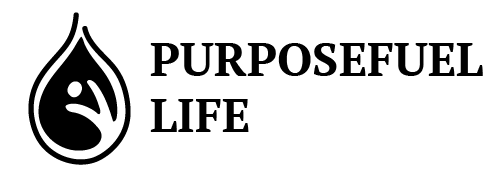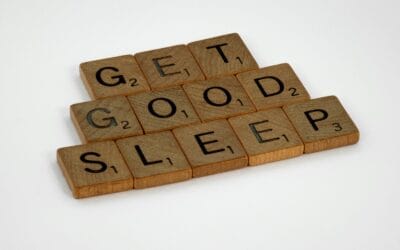- Circadian Rhythm Optimization: The Foundation of Everyday Health
- Energy Management vs. Time Management: Why Scheduling Everything Destroys Your Flow
- Breath and Movement: The Fastest Way to Boost Energy (No Coffee Required)
- Active Recovery Practices: Why Doing Nothing Is the Real Mistake
- Sleep Quality Basics: Why “8 Hours” Isn’t Enough
- Why You Still Feel Exhausted (Even When You Are Productive)
- You Do Not Need More Time. You Need a New Nervous System.
Table of Contents
When I Learned Rest Was Making Me Stiffer
Most people think rest days mean nothing days. No work, no stress, no movement. The default becomes Netflix marathons, endless scrolling, couch naps. That used to be me.
Until I noticed something: the next workout felt heavier, my joints ached more, and mental fog rolled in. Instead of feeling recovered, I felt punished for being active in the first place.
What changed everything for me was learning that purposeful movement on rest days, stretching, walking, cold exposure, not only helped me recover, it made me feel sharper and lighter. I did not just recover. I recharged.
That is active recovery: conscious, intentional movement during downtime. It is not just resting. It is recovering in motion.
Why This Actually Matters
If you skip active recovery, you are not really resting. You are letting tension, metabolic waste, and fatigue accumulate in the background. Over time, this creates injuries, burnout, and a sluggish nervous system.
Athletes feel it first in performance drops. Regular people feel it as morning stiffness, low afternoon energy, or sudden injuries after mild effort. It does not matter if you are training hard or just staying active, recovery days done wrong affect both.
Active recovery is not optional. It is foundational.
The Science: Why Moving During Recovery Works
Mobility and Stretching
Gentle stretching and mobility drills do more than just “feel good.” They release anchored tension in muscles and fascia, help joints stay lubricated, and improve neuromuscular coordination.
Research shows that regular mobility work enhances circulation, speeds up recovery, and decreases the risk of injuries. Especially in tight zones like hips and shoulders. Ignoring mobility means your body tightens up day by day until movement becomes inefficient or painful.
Low Intensity Cardio
Walking, cycling, swimming, all at zone one effort. This means very light intensity where you can talk comfortably. It keeps blood flowing, moves nutrients to damaged tissues, and clears out metabolic waste like lactate.
This is not about building cardio fitness on recovery days. It is about using movement as a pump for your recovery systems.
Cold Exposure
I use cold showers or cold plunges deliberately, not randomly. Two to five minutes, a few hours after training. The research out of Rodboud University confirms that cold exposure boosts mitochondrial output, lowers inflammation, and balances stress hormones like cortisol.
Cold does not replace recovery. It enhances the reset process that happens after intense sessions.
The Rest Paradox
The paradox is clear: athletes who engage in active recovery consistently report less soreness, fewer injuries, and better performance.
Passive rest, by comparison, often leaves the body stagnant. Your nervous system stays idle. Your tissues stay tight. Movement tells your body, “we are still in the game, keep adapting.”
That is the difference between feeling ready versus feeling rusty.
My System for Active Recovery (How I Do It Consistently)
After years of trial and error, here is my structured approach that now happens almost automatically:
- Post Workout Mobility: Five to ten minutes focusing on key tight areas like hamstrings, hips, and shoulders. This includes foam rolling, stretching, and simple movement drills.
- Cold Exposure: Two to five minutes of a cold shower or plunge, always separated from training windows. I avoid doing it immediately post workout to not blunt hypertrophy signals.
- Dedicated Recovery Days Twice Per Week:
- Thirty to forty minutes of easy zone one cardio like walking or cycling
- Followed by ten minutes of focused mobility work
The key is no performance targets. No speed. No heart rate goals. It is just light, intentional movement that keeps everything flowing.
Where Most People Go Wrong
There are three common mistakes I see often:
- Overtraining on Recovery Days
People turn active recovery into another workout. That is not the point. If you feel drained afterward, you missed the mark. Recovery should leave you refreshed. - Doing Nothing
Total inactivity leads to stagnation. Tightness accumulates. Tissues stiffen. Your nervous system does not get that gentle wake up it needs. - Skipping Mobility
Many people think stretching is optional or just fluff. I used to as well. Until I paid the price with stiff mornings, tight hips, and more injuries.
Recovery means finding the middle ground: movement with purpose, light effort with real impact.
My Experience
For years, I thought rest meant complete stillness. I did not know that stillness could hurt more than help.
When I first added structured active recovery, I felt the difference within days. Joints loosened. Workouts felt lighter. Energy stayed consistent across the week. Mental clarity improved.
Soreness melted away. Sleep deepened. I stopped feeling “off” in the middle of the day. Momentum replaced frustration.
Deep Dive: How It All Connects
Hydration and Microcirculation
Active movement pumps blood and fluid through tissues. It clears toxins and delivers nutrients while maintaining hydration around cells. That is essential for joint health and tissue repair.
Hormonal Ripple Effects
Low level activity raises nitric oxide and lowers cortisol. It also balances insulin. This creates an anabolic environment where your body recovers faster, sleeps deeper, and rebuilds stronger.
Neurological Reset
Gentle mobility plus breathing triggers the parasympathetic nervous system. Your brain shifts from fight or flight to rest and digest. This fuels not just physical recovery but also mental sharpness.
Consistency Over Intensity
The secret is not in how hard you do it. It is in how often. Active recovery is a rhythm. Not a one time session. You build it into your week until it feels as normal as brushing your teeth.
Your Practical Active Recovery Blueprint
Here is your system in simple form:
- After Any Intense Workout:
- Five to ten minutes of easy mobility
- Two to five minutes of cold shower or plunge later in the day
- On Dedicated Recovery Days:
- Thirty to forty minutes of zone one cardio
- Ten minutes of mobility flow
Tools to Use:
- Yoga blocks or rings for stretching
- Foam roller for fascia work
- Cold exposure setups (shower, plunge, cryotherapy)
Tracking Metrics:
- Rate morning stiffness from one to ten
- Mood and energy each afternoon
- Performance impact on next training day
Potential Pitfalls and How to Avoid Them
- Doing Intense Cardio on Recovery Days: That is just more training. Keep it light.
- Doing Mobility While Fatigued: If form gets sloppy, wait. Quality matters.
- Relying on Only One Recovery Tool: Stretching alone does not solve circulation. Cold exposure alone does not solve mobility. It is a multi layered system.
Why Active Recovery Is Foundational
Active recovery keeps your system running smoothly. Skipping it leads to fatigue build up. That eventually breaks down your body, mind, or consistency.
Done right, active recovery delivers:
- Stronger training results
- Fewer injuries
- Resilient mood and steady energy
- Consistent performance across weeks
It is what keeps progress sustainable instead of sporadic.
Your Challenge
This week, after your next workout, commit to:
- Five to ten minutes of light mobility
- A cold shower or plunge later that day
- One dedicated recovery day with a thirty minute walk and ten minute mobility flow
Track how you feel each day: soreness, energy, focus. Build your own system through action.





